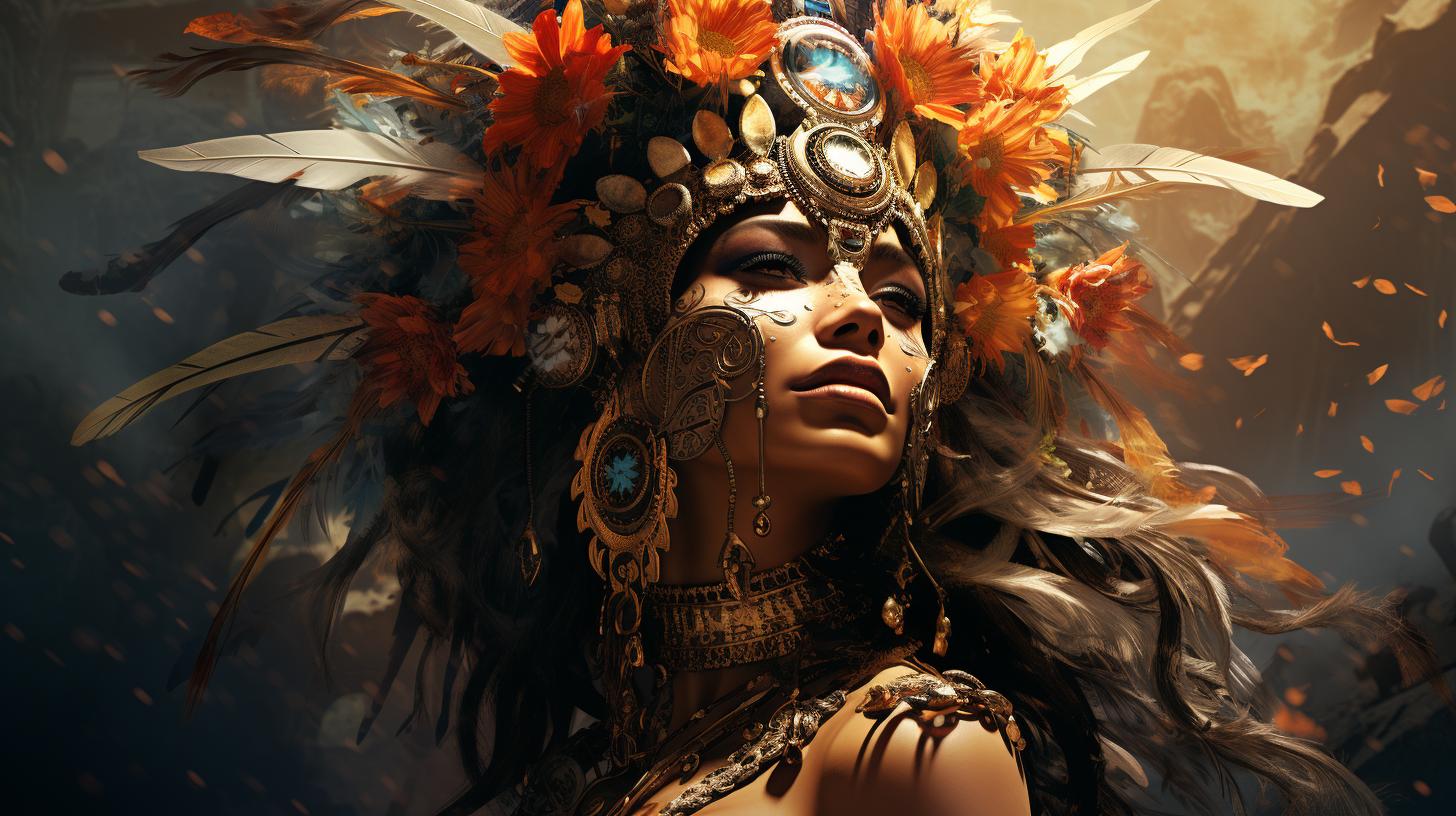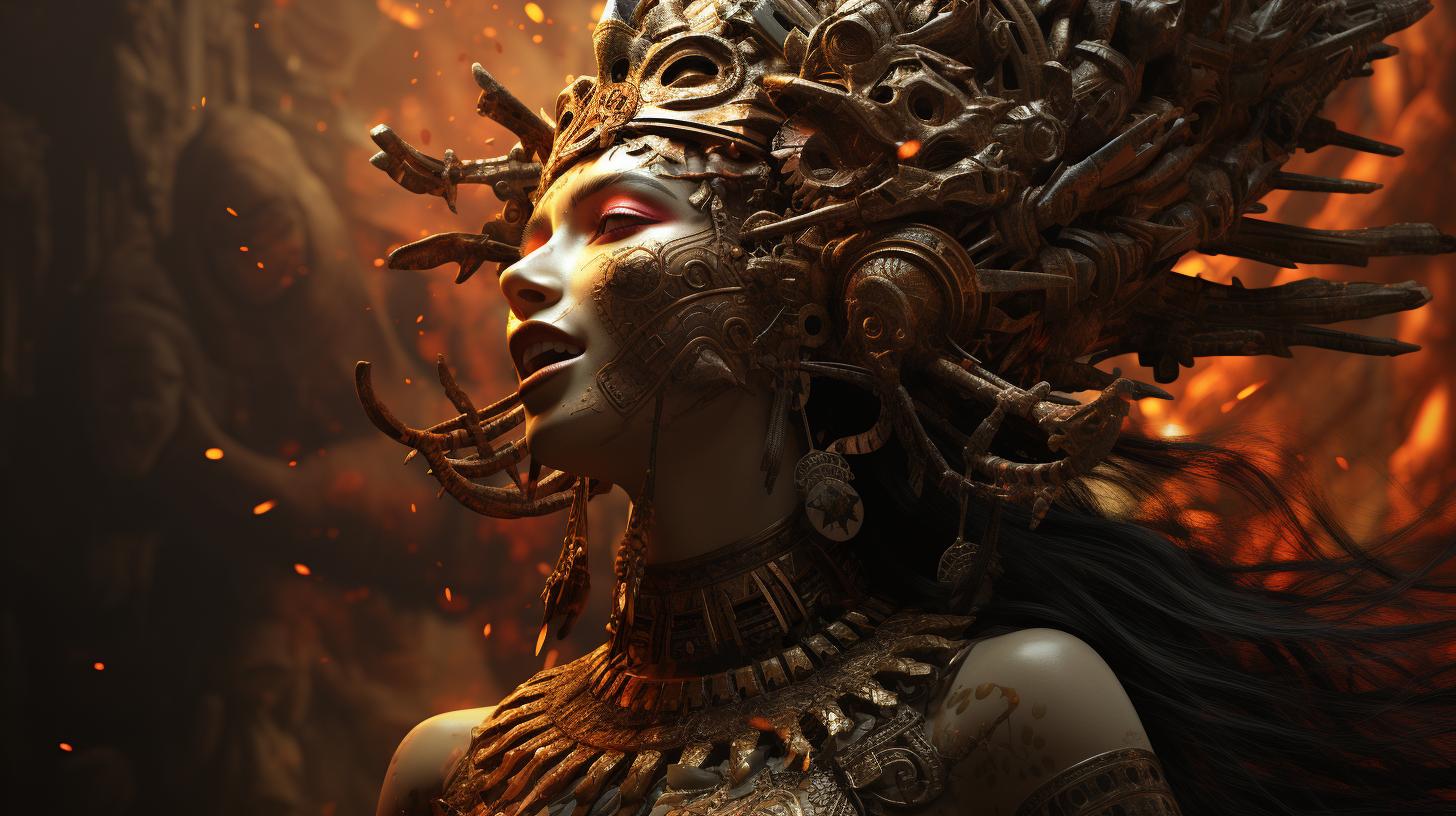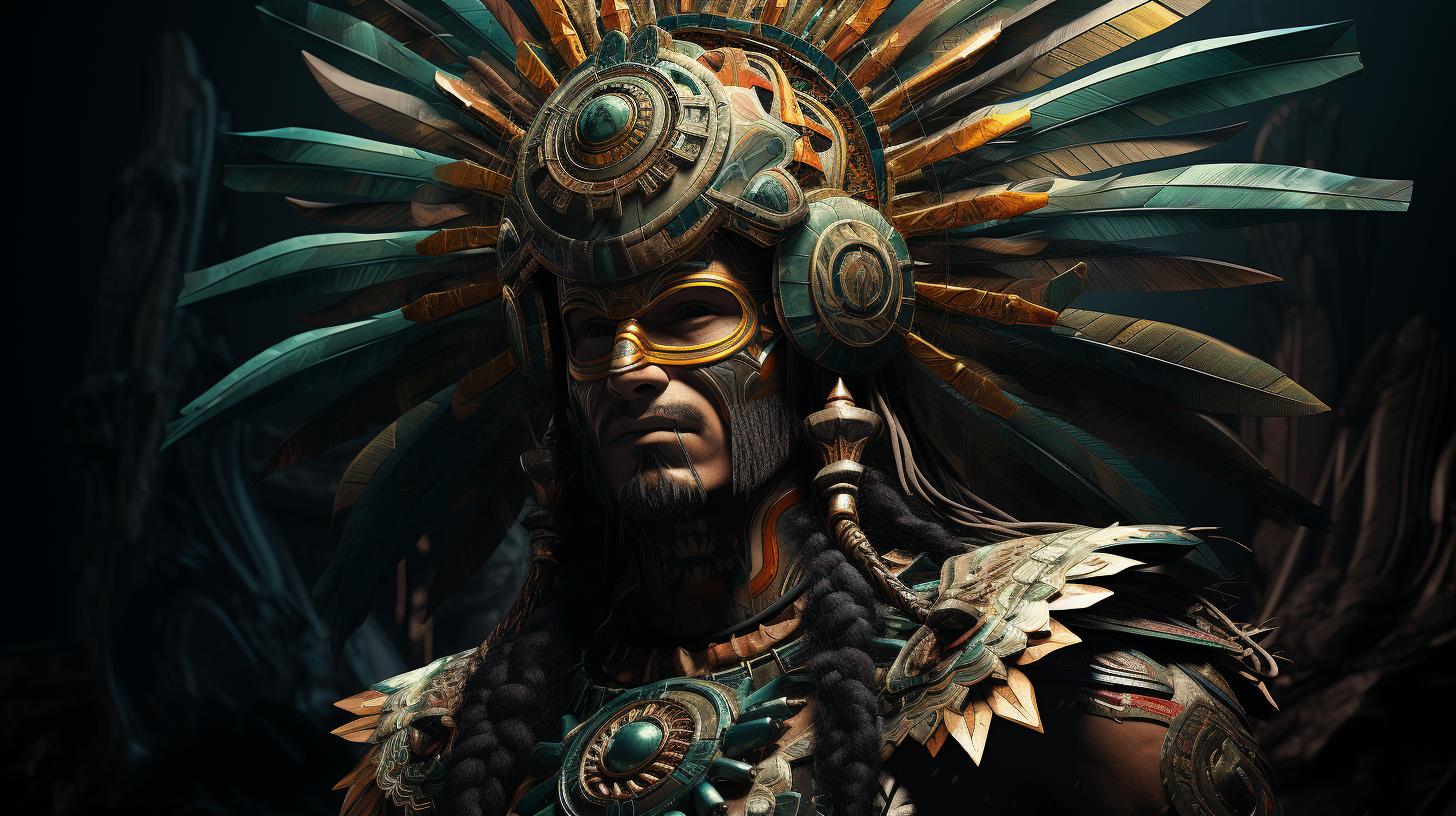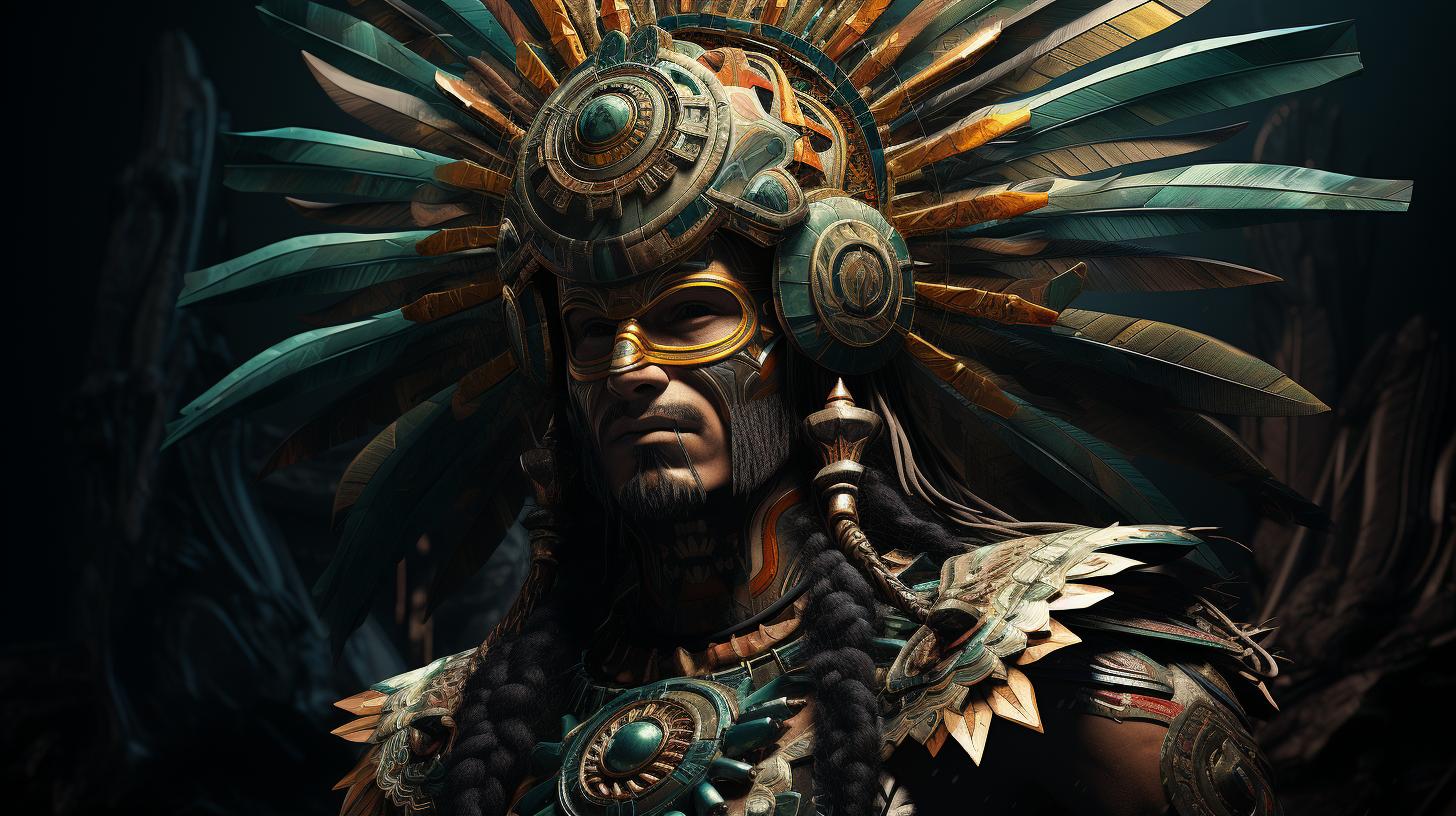Ilamatecuhtli: Exploring the Aztec Goddess of Midwifery and Creation

Ilamatecuhtli is an ancient Aztec goddess associated with midwifery and creation. She is also known as Citlalicue or Citlalinicue. Ilamatecuhtli is revered as the goddess of stars, the Milky Way, the earth, death, and darkness.
Along with her husband Citlalatonac, she is credited with the creation of the stars. This article provides an overview of Ilamatecuhtli’s significance, her associations with other deities, and her role in Aztec mythology.
The Aztec Goddess Ilamatecuhtli
Welcome to the fascinating world of Ilamatecuhtli, the ancient Aztec goddess who holds great significance in their mythology.
In this section, we will delve into the mysteries surrounding Ilamatecuhtli and explore her role in Aztec cosmology.
Who is Ilamatecuhtli?
Ilamatecuhtli stands as a prominent figure among the Aztec deities. She is commonly revered as the goddess of midwifery, known for her association with childbirth and the well-being of mothers.
However, her influence extends far beyond this domain.
Ilamatecuhtli embodies a multifaceted persona and is also known as Citlalicue or Citlalinicue. She is recognized as the goddess of creation, the stars, the Milky Way, the earth, death, and darkness.
Her role intertwines with various aspects of the Aztec worldview, making her a complex and revered figure.
Significance of Ilamatecuhtli in Aztec Mythology
Ilamatecuhtli holds immense significance in Aztec mythology and spirituality. As the goddess of midwifery, she is believed to guide and protect mothers during childbirth, ensuring the safe arrival of new life into the world.
Beyond her association with childbirth, Ilamatecuhtli plays a vital role in the creation narrative of the Aztecs. Alongside her divine consort, Citlalatonac, she is credited with the creation of the stars, bestowing the heavens with their radiant splendor.
Furthermore, Ilamatecuhtli’s connection to death and darkness highlights her role as a liminal deity, bridging the realms of life and the afterlife. She embodies the transformative nature of existence, guiding souls through the realms of the deceased.
Ilamatecuhtli’s presence in Aztec mythology underscores the profound reverence the Aztecs held for the cycles of life, death, and creation. Through her various attributes and associations, she represents the intricate tapestry of cosmic forces within their belief system.
Ilamatecuhtli’s Associations and Attributes
Ilamatecuhtli and Cihuacoatl
Ilamatecuhtli has a significant association with Cihuacoatl, another prominent Aztec deity. It is believed that Ilamatecuhtli and Cihuacoatl share a close connection due to their similar roles in childbirth and motherhood.
They both hold the responsibility of overseeing the well-being and protection of women during pregnancy and labor.
Ilamatecuhtli’s Role in Midwifery and Partería
Ilamatecuhtli is primarily recognized as the goddess of midwifery. Her role involves guiding and aiding women during childbirth, ensuring a safe delivery and healthy outcome for both mother and child.
Aztec society highly revered and sought the blessings of Ilamatecuhtli for successful and smooth childbirth experiences.
The importance of partería (midwifery) in Aztec culture
- Midwifery was considered a crucial aspect of Aztec society, as the population depended on the survival and well-being of infants.
- Parteras (midwives) played an essential role in providing support and expertise during childbirth, often performing rituals and using medicinal herbs for the well-being of mother and child.
- The presence of Ilamatecuhtli in the realm of midwifery underscores the cultural significance attached to this divine practice.
Ilamatecuhtli’s Connection to Fire Festivals and Burial Practices
In addition to her association with midwifery, Ilamatecuhtli is known to partake in fire festivals and burial practices.
Ancient Aztecs believed that fire possessed purifying and transformative qualities. Ilamatecuhtli’s involvement in these festivals symbolized her deep connection to renewal, regeneration, and transitions.
Significance of burying haces de cañas (bundles of canes) by Ilamatecuhtli
- Burying haces de cañas was considered an important ritual act associated with fertility and abundance.
- Ilamatecuhtli’s participation in this practice signified her role in ensuring prosperity and growth.
- By burying these significant objects, Ilamatecuhtli honored the cycles of life and death, fostering harmony and balance within the Aztec cosmology.
Remember to properly close all HTML tags at the end.
Ilamatecuhtli as Citlalicue: Goddess of Creation and Darkness
Ilamatecuhtli, also known as Citlalicue, holds a significant role in Aztec mythology as the goddess of creation and darkness. Let’s delve into the different aspects of Citlalicue’s divine nature and explore the symbolism associated with her.
Citlalicue’s Role in Creation Mythology
In Aztec creation mythology, Citlalicue plays a central role as the goddess of creation. She is believed to have taken part in the birth of the universe itself, bringing forth the stars, the planets, and all celestial bodies.
It is through her divine power that the world as we know it came into existence.
Citlalicue’s Association with the Stars and the Milky Way
As the goddess of creation, Citlalicue is intricately linked to the stars and the Milky Way. The Aztecs viewed the Milky Way as a manifestation of her cosmic power, symbolizing the path through which life and energy flow.
Citlalicue’s association with the stars represents her role in guiding the celestial bodies and maintaining cosmic harmony.
The Deeper Symbolism of Citlalicue as the Goddess of Darkness
Beyond her role in creation, Citlalicue holds a profound symbolism as the goddess of darkness. Darkness, in Aztec cosmology, is not associated with evil but rather represents the primordial void from which all things emerge.
Citlalicue’s connection to darkness signifies the unseen forces that shape existence, the mysterious depths of the cosmos, and the transformative power of the unknown.
In conclusion, Citlalicue, also referred to as Ilamatecuhtli, is the goddess of creation and darkness in Aztec mythology.
She embodies the creative power that shaped the universe and holds deep symbolism as the keeper of the stars, the Milky Way, and the enigmatic forces of darkness. Understanding her role provides insights into the complex spiritual beliefs of the Aztecs and their reverence for the cosmic forces that govern existence.
Ilamatecuhtli and Citlalatonac: The Divine Couple
Ilamatecuhtli and Citlalatonac hold a significant place in Aztec mythology as the divine couple responsible for the creation of the stars. Their union represents the cosmic balance of male and female energies in the divine realm.
Let’s explore their roles and associations in more detail.
Ilamatecuhtli and Citlalatonac’s Creation of the Stars
Ilamatecuhtli and Citlalatonac joined forces to bring forth the stars, illuminating the night sky with their celestial brilliance. Together, they carefully placed each star in its designated place, crafting a vast and awe-inspiring display.
This act of creation represented their power over the cosmos and the divine energy they possessed.
The Association of Ilamatecuhtli and Citlalatonac with Nata and Nena
Ilamatecuhtli and Citlalatonac are also associated with the mythical first couple, Nata and Nena. It is believed that they played a significant role in the creation of these first human beings, forming a divine connection between the celestial and earthly realms.
This association represents their influence over the origins of humanity and the ongoing interconnectedness between mortals and the divine.
Exploring the Pronunciation and Gender of Ilamatecuhtli
The precise pronunciation of Ilamatecuhtli’s name remains uncertain, but it is generally accepted that it is pronounced with an emphasis on the syllables “Ila-ma-te-cuh-tli.” As for the gender of Ilamatecuhtli, she is unequivocally regarded as a powerful female deity in Aztec mythology.
Her femininity symbolizes her nurturing and life-giving attributes, reflecting her role as the goddess of midwifery and creation.
In conclusion, Ilamatecuhtli and Citlalatonac form a divine couple with immense creative power in Aztec mythology.
Together, they brought forth the stars, symbolizing their cosmic influence and harmony. Their association with Nata and Nena signifies their involvement in the creation of humanity, emphasizing the connection between the divine and mortal realms.
Ilamatecuhtli’s name and gender further showcase her significance as a prominent goddess within Aztec culture.




















